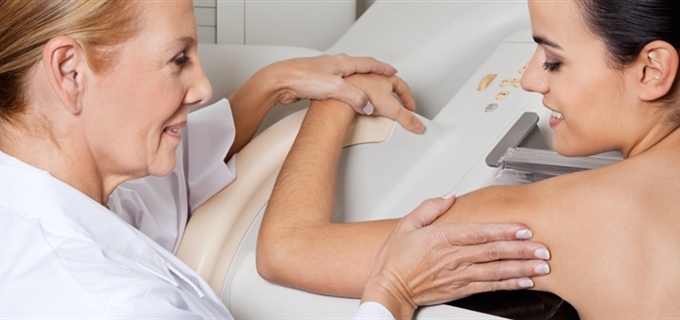Search for a doctor or hospital in your network.


Search for a doctor or hospital in your network.
Download the BCBSNM App. Your coverage information in the palm of your hand.

Get News & Updates Directly To Your Inbox
Since their introduction, standard mammograms — also called screening mammograms — have helped save countless lives. By using X-rays, they create two-dimensional images of the breast to spot tissue that may be cancerous.
Still, over the past decade, there have been advances in mammogram technology. Research shows 3D mammography (breast tomosynthesis) can detect breast cancer 28% more accurately than standard mammograms.
Here’s a deeper dive on the potential benefits and risks of a 3D mammogram.
Standard 2D mammograms take two pictures of the breast. Side-to-side and top-to-bottom images are made. To capture them, the breast is pulled away from the body, compressed and held between two glass plates. This allows the whole breast to be seen. One of its drawbacks is breast tissue can overlap during compression. Healthy tissue may appear suspicious and cancerous tissue can be masked. For this reason, 2D mammograms can sometimes produce inaccurate findings.
In contrast, 3D mammograms use CT (computed tomography) scans. The scans take detailed X-ray images from many angles. Combined, the X-rays create a three-dimensional picture of each breast. Tissue doesn’t overlap. As a result, 3D mammograms lower the number of false alarms. This is especially important for women who have dense breast tissue. Fewer false alarms reduce unnecessary re-testing — along with stress and worry.
CT-scan technology exposes patients to more radiation than an X-rays. Women who get a 3D mammogram may also get a traditional 2D mammogram, exposing them to higher amounts of radiation. While radiation exposure can cause cancer, new technology helps reduce the amount of radiation exposure that comes with a mammogram. Still, the overall benefit of 2D and 3D breast cancer screening outweigh any potential risks linked to radiation exposure.
While 3D mammograms show some promise in better health outcomes, there isn’t enough research to advocate them over 2D mammograms. The U.S. Preventive Services Task Force currently recognizes both 2D and 3D mammography as equally acceptable screening methods.
3D mammograms may be covered by your health plan. You should call the number on your member ID card for more information before you schedule one.
The U.S. Preventive Services Task Force ![]() recommends that women between the ages of 40 and 74 and at average breast cancer risk get a mammogram at least every two years.
recommends that women between the ages of 40 and 74 and at average breast cancer risk get a mammogram at least every two years.
If you have a higher risk for breast cancer, talk to your doctor about screening, no matter your age. Breast cancer risk factors include:
Check with your doctor if you have questions about mammograms or other breast cancer screenings.
Learn more about mammogram screenings ![]() in this video.
in this video.
Originally published 11/16/2015; Revised 2019, 2022, 2024
Blue Cross and Blue Shield of New Mexico, a Division of Health Care Service Corporation,
a Mutual Legal Reserve Company, an Independent Licensee of the Blue Cross and Blue Shield Association
© Copyright 2025 Health Care Service Corporation. All Rights Reserved.
Verint is an operating division of Verint Americas, Inc., an independent company that provides and hosts an online community platform for blogging and access to social media for Blue Cross and Blue Shield of New Mexico.
![]() File is in portable document format (PDF). To view this file, you may need to install a PDF reader program. Most PDF readers are a free download. One option is Adobe® Reader® which has a built-in screen reader. Other Adobe accessibility tools and information can be downloaded at https://www.adobe.com/trust/accessibility.html.
File is in portable document format (PDF). To view this file, you may need to install a PDF reader program. Most PDF readers are a free download. One option is Adobe® Reader® which has a built-in screen reader. Other Adobe accessibility tools and information can be downloaded at https://www.adobe.com/trust/accessibility.html.![]()
![]() You are leaving this website/app ("site"). This new site may be offered by a vendor or an independent third party. The site may also contain non-Medicare related information. Some sites may require you to agree to their terms of use and privacy policy.
You are leaving this website/app ("site"). This new site may be offered by a vendor or an independent third party. The site may also contain non-Medicare related information. Some sites may require you to agree to their terms of use and privacy policy.
Powered by Verint